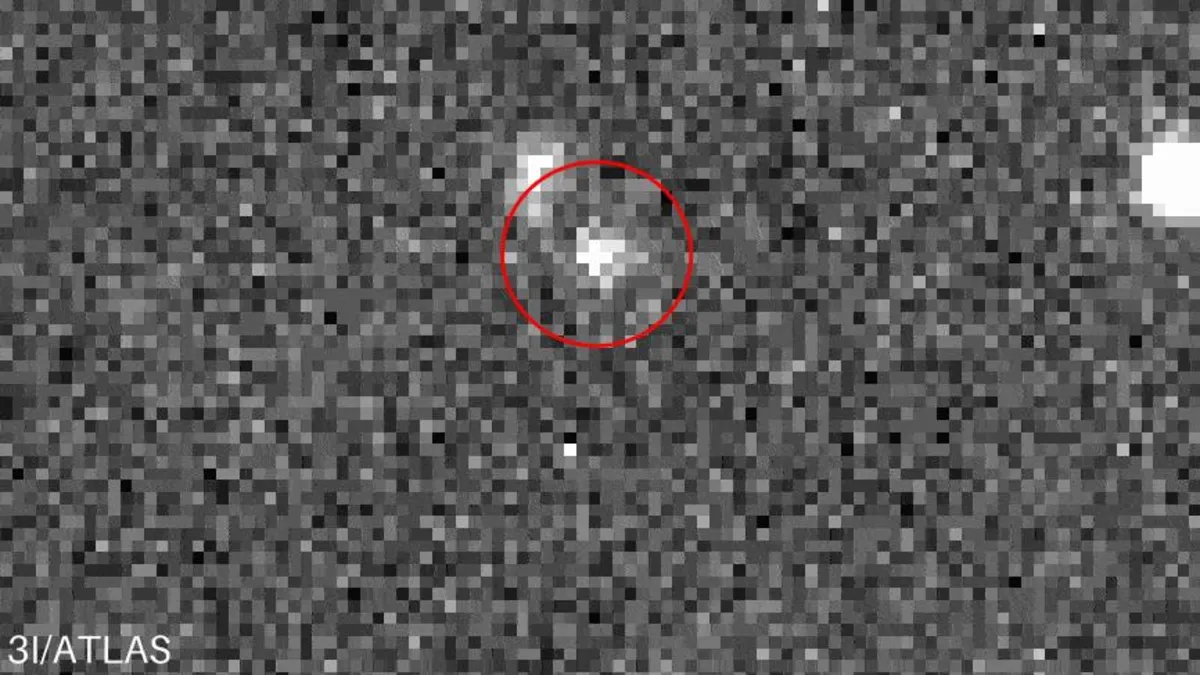
The astronomical community is currently buzzing with excitement over the recent discovery of a new interstellar object, known as 3I/ATLAS. This remarkable comet is only the third of its kind ever observed, and it is hurtling toward Earth on a one-way trip through the solar system. Astronomers are racing against time to study this alien interloper before it disappears from our view forever. Darryl Seligman, an astronomer at Michigan State University and the lead author of a paper about this fascinating object, stated, “We only have one shot at this object and then it's gone forever.” He emphasizes the urgency in gathering as much data from all available observatories.
3I/ATLAS was first identified on July 1, 2023, utilizing data collected by the Asteroid Terrestrial-impact Last Alert System (ATLAS). Its trajectory and incredible speed—exceeding 130,000 mph (210,000 km/h)—immediately captured the attention of researchers. Just 24 hours post-discovery, NASA confirmed that this object is indeed an interstellar entity. By July 3, a collaborative team of over 40 astronomers, led by Seligman, had uploaded the first comprehensive paper detailing this extrasolar object to the preprint database arXiv.
Initial observations suggest that 3I/ATLAS is a sizable comet, encased in a cloud of ice, dust, and gas that spans approximately 15 miles (24 kilometers) in diameter. This recent discovery is particularly significant, as only two other interstellar objects (ISOs) have been previously documented: 1I/'Oumuamua in 2017 and 2I/Borisov in 2019. The rarity of such findings makes the study of 3I/ATLAS all the more appealing to astronomers.
Time is of the essence for astronomers studying 3I/ATLAS. Currently positioned about 4.5 times farther from the sun than Earth, the comet is expected to reach its closest point to the sun, known as perihelion, on October 30. Following this point, it will begin its journey out of the solar system, making it increasingly difficult to observe. Furthermore, 3I/ATLAS will be obscured from view between late September and early December, as it will be located on the opposite side of the sun from our planet.
In the upcoming weeks and months, researchers plan to utilize a variety of telescopes to make observations of 3I/ATLAS. Sean Raymond, a planetary scientist at the University of Bordeaux in France, indicates that this effort will be particularly vital for observatories located in the Southern Hemisphere, which will have a clearer view of the comet as it grows brighter. Aster Taylor, a graduate student at the University of Michigan and co-author of the arXiv study, noted the special anticipation surrounding the potential imaging of 3I/ATLAS with the Vera C. Rubin Observatory. This facility, known as the world's most powerful optical telescope, is set to officially open in the coming months and has already demonstrated its capability to image previously unseen asteroids.
Additionally, both the James Webb Space Telescope (JWST) and the Hubble Space Telescope may contribute valuable insights regarding the chemical composition of 3I/ATLAS, thanks to their ability to analyze the object across multiple wavelengths of the electromagnetic spectrum. Some researchers have even suggested using NASA's Mars rovers to capture images of the comet during its close approach to the Red Planet shortly before it reaches perihelion. These rovers have previously been employed to observe hazardous sunspots on the sun's far side.
The study of 3I/ATLAS offers a unique opportunity to explore the formation of alien star systems and to gain insights into the potential origins of exoplanets. According to Raymond, interstellar objects like 3I/ATLAS are likely remnants from the formation of exoplanets. By examining these objects, scientists can better understand the processes involved in the evolution of planetary systems. As Amir Siraj, a doctoral candidate at Princeton University, explains, ISOs like 3I/ATLAS create a connection between our solar system and its broader galactic environment.
While the origins of 3I/ATLAS remain uncertain, researchers believe it may be possible to trace its path back to its source, particularly as they gather more data on its age. Wes Fraser, an astronomer with the National Research Council Canada, notes that as the comet approaches perihelion, the volatiles released from the object will aid in refining our understanding of its origins. However, Taylor cautions that pinpointing a specific star system as the source may still prove elusive.